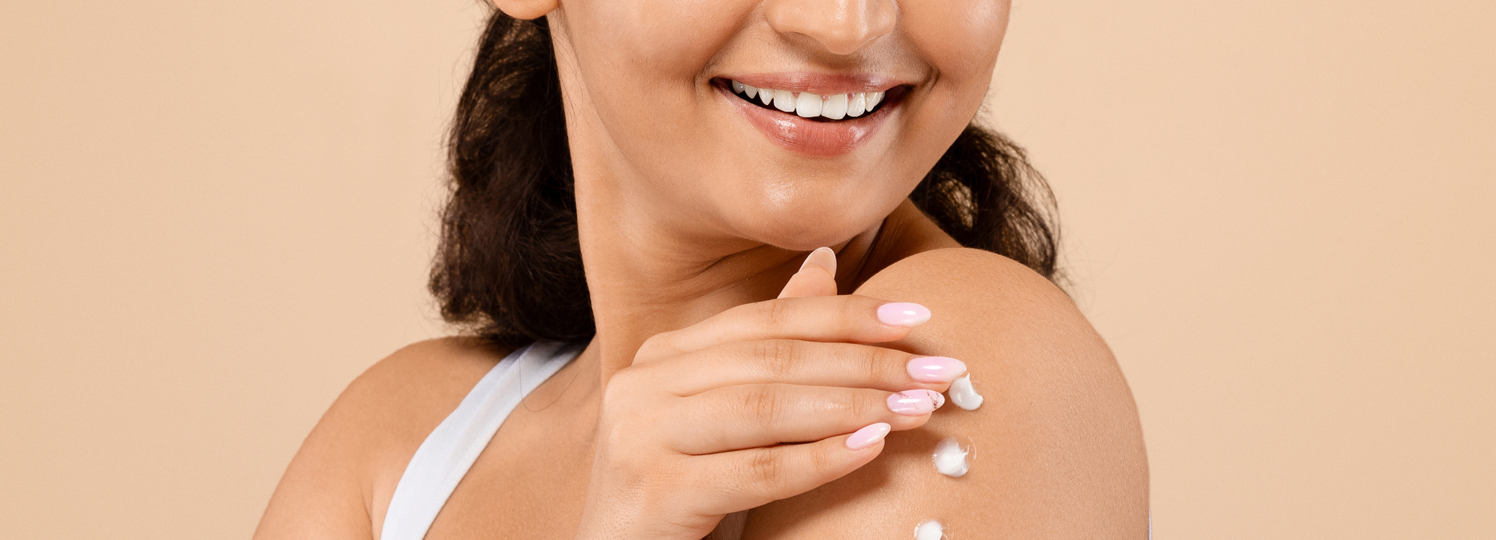

Body Care


Body Care
Body Lotion with orange oil. Like all products from Dr. Baumann SkinIdent, they are free of parabens and all other preservatives, provide a shelf life of more than 30 months, contain high-quality plant-based active ingredients and are free of mineral oils and animal-derived components – vegan and animal-friendly.
200 ml Bottle
Art.-Nr. 3048
Aqua, Prunus Armeniaca Kernel Oil, Simmondsia Chinensis Oil, Macadamia Ternifolia Seed Oil, Butylene Glycol, Urea, Alcohol, Polyglyceryl-3 Methylglucose Distearate, D-alpha Tocopheryl Acetate, D-mixed-Tocopherols, Sodium Lactate, Lactic Acid, Allantoin, Glyceryl Stearate, Citrus Aurantium Dulcis Peel Oil, Xanthan Gum, Ceteareth-20, Sodium Hydroxide, Limonene, Linalool
Aqua:
Water. It accounts for around 65% of the weight of the human body and is therefore of fundamental importance for bodily functions, including those of the skin. In many cosmetic products (aqueous solutions, cleansers, emulsions), water is the ingredient with the largest proportion of the formulation in terms of quantity and forms the basis of the aqueous phase in emulsions. Water is a good solvent for polar (hydrophilic) substances such as alcohols, water-soluble vitamins or salts. For use in cosmetic products, the water used is generally pre-treated to remove microorganisms that could lead to spoilage of the product or dissolved salts that may impair the stability of emulsions or gels (sterilization and desalination).
Prunus Armeniaca Kernel Oil:
Apricot kernel oil, rich in monounsaturated and diunsaturated fatty acids
Simmondsia Chinensis Oil:
Some kind of oil
Butylene Glycol:
Solvent with moisturizing effect on the skin, very good compatibility, should be preferred to propylene glycol in products used daily
Urea:
The water-soluble urea is used in numerous cosmetic products. Urea is a component of the natural moisturising factors of the horny layer (content between 7 % and 12 %; up to half lower in chronically dry skin) and has a high water-binding capacity. It contributes to sustained moisturisation of the skin and reduces transepidermal water loss. Urea has a keratoplastic effect, in higher concentrations it has a keratolytic effect and is therefore also used in the care of skin affected by psoriasis or atopic dermatitis (neurodermatitis). Urea is also able to reduce the irritating potential of surfactants.
Alcohol:
Ethyl alcohol: Body identical. Has a refreshing and antibacterial effect. Also serves as a solvent for other ingredients. Contrary to claims to the contrary, there is no risk of a drying effect on the skin at normal application concentrations!
Polyglyceryl-3 Methylglucose Distearate:
Emulsifier for O/W systems with very good skin compatibility. Obtained from glycerine, sugar and fatty acids.
D-alpha Tocopheryl Acetate:
Natural vitamin E acetate; storage form in the skin, is converted into the active form by dissolving the acetate bond; antioxidant with skin-protecting properties, e.g. against UV radiation, retains moisture, delays premature skin ageing
D-mixed-Tocopherols:
Is the name of a mixture of natural tocopherols (vitamin E; D-alpha-, beta-, gamma- and delta-tocopherol). Vitamin E is the most important skin protection vitamin, which protects the skin from UV rays and oxygen radicals.
Sodium Lactate:
Sodium salt of lactic acid: Has a moisturising effect on the skin, with the physiological pH value of the skin averaging 5.5. Important component of the natural moisturising factor (NMF) and the acid mantle of the skin.
Lactic Acid:
Lactic acid. Occurs as a metabolic product in the body and on the skin, has a peeling effect on the horny layer in higher concentrations and at a low pH value of 2 to 3, supports the moisture content in buffered form (physiological pH value of the skin approx. 5.5) and preserves the skin's protective acid mantle.
Allantoin:
Allantoin is a body-identical, water-soluble substance and is chemically related to urea. It is found in various plants but is now produced synthetically for use in cosmetics. Its most important property is the stimulation of new cell formation. It promotes collagen formation, skin regeneration and wound healing, stimulates desquamation, smoothes the skin and can have a soothing effect on atopic dermatitis.
Glyceryl Stearate:
Is a component of sebum, partially saponified fat, skin-protecting and moisturizing properties, consistency regulator and auxiliary emulsifier for lotions and creams.
Citrus Aurantium Dulcis Peel Oil:
Essential oil from orange peel
Xanthan Gum:
Polysaccharide, natural gelling agent with very good skin-compatible properties, is obtained biotechnologically.
Ceteareth-20:
Emulsifier based on fatty alcohols.
Sodium Hydroxide:
Sodium hydroxide. Used to adjust the pH value of cosmetic products. Sodium and hydroxide ions are identical to the body.
Limonene:
Fragrance, natural component of essential oils.
Linalool:
Fragrance, natural component of essential oils.